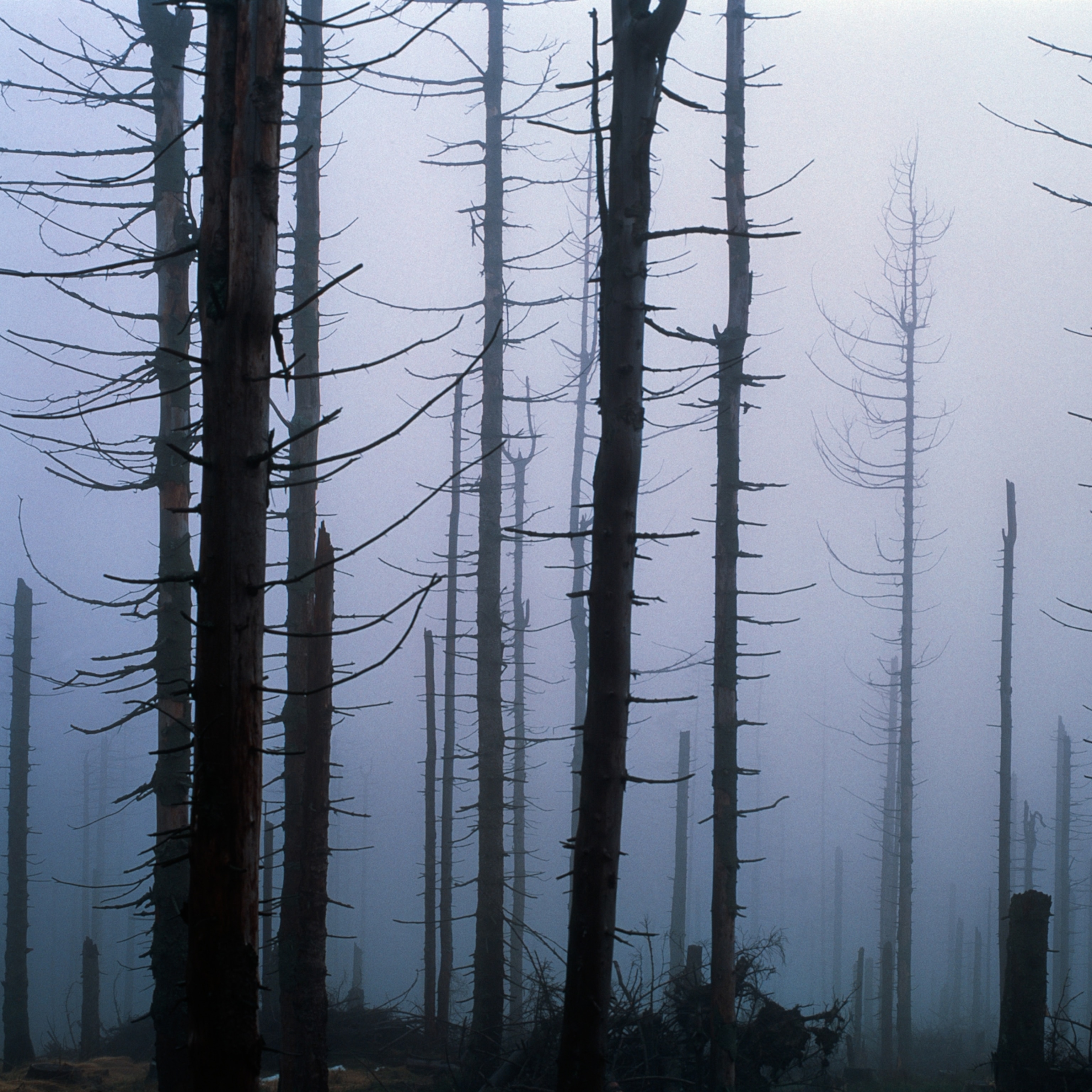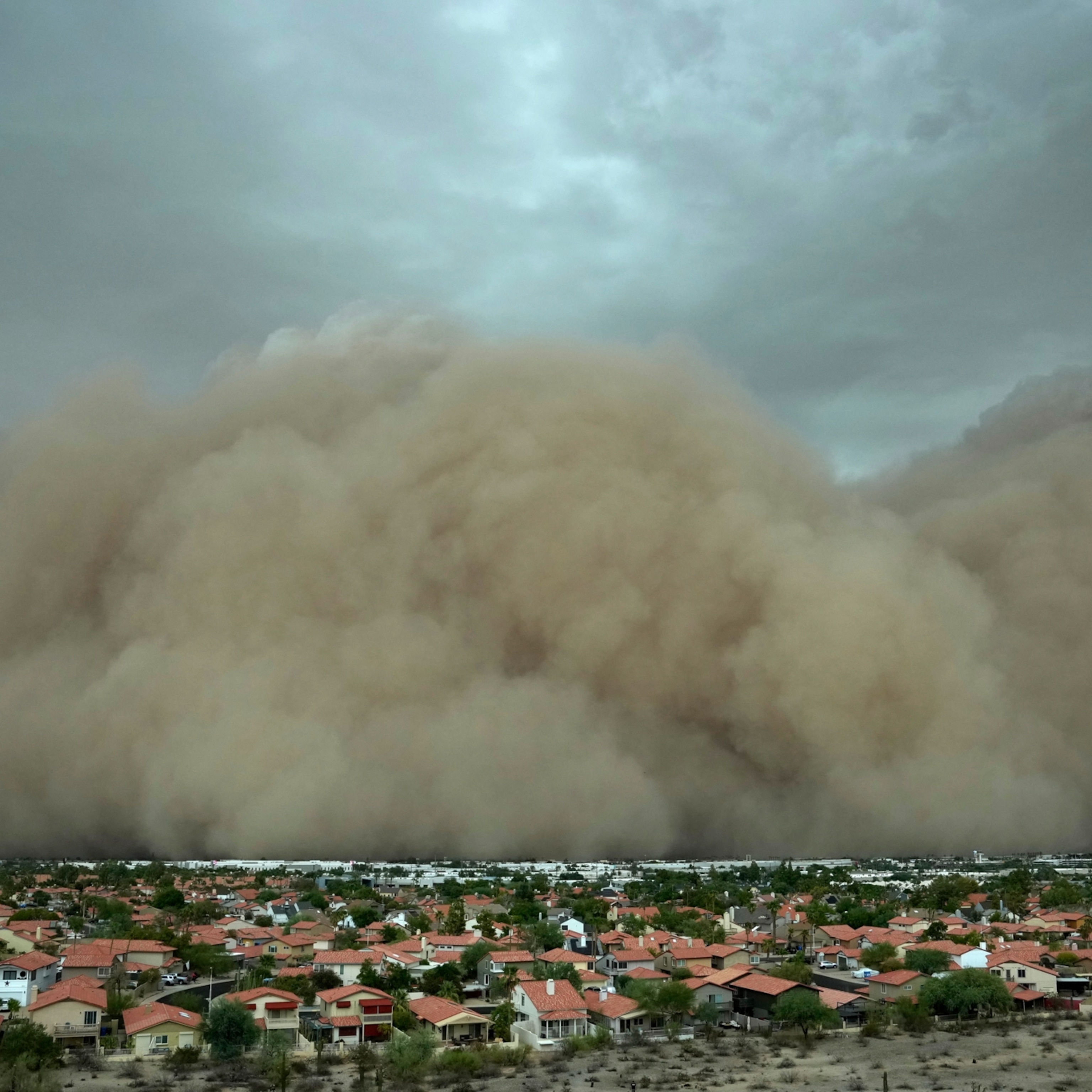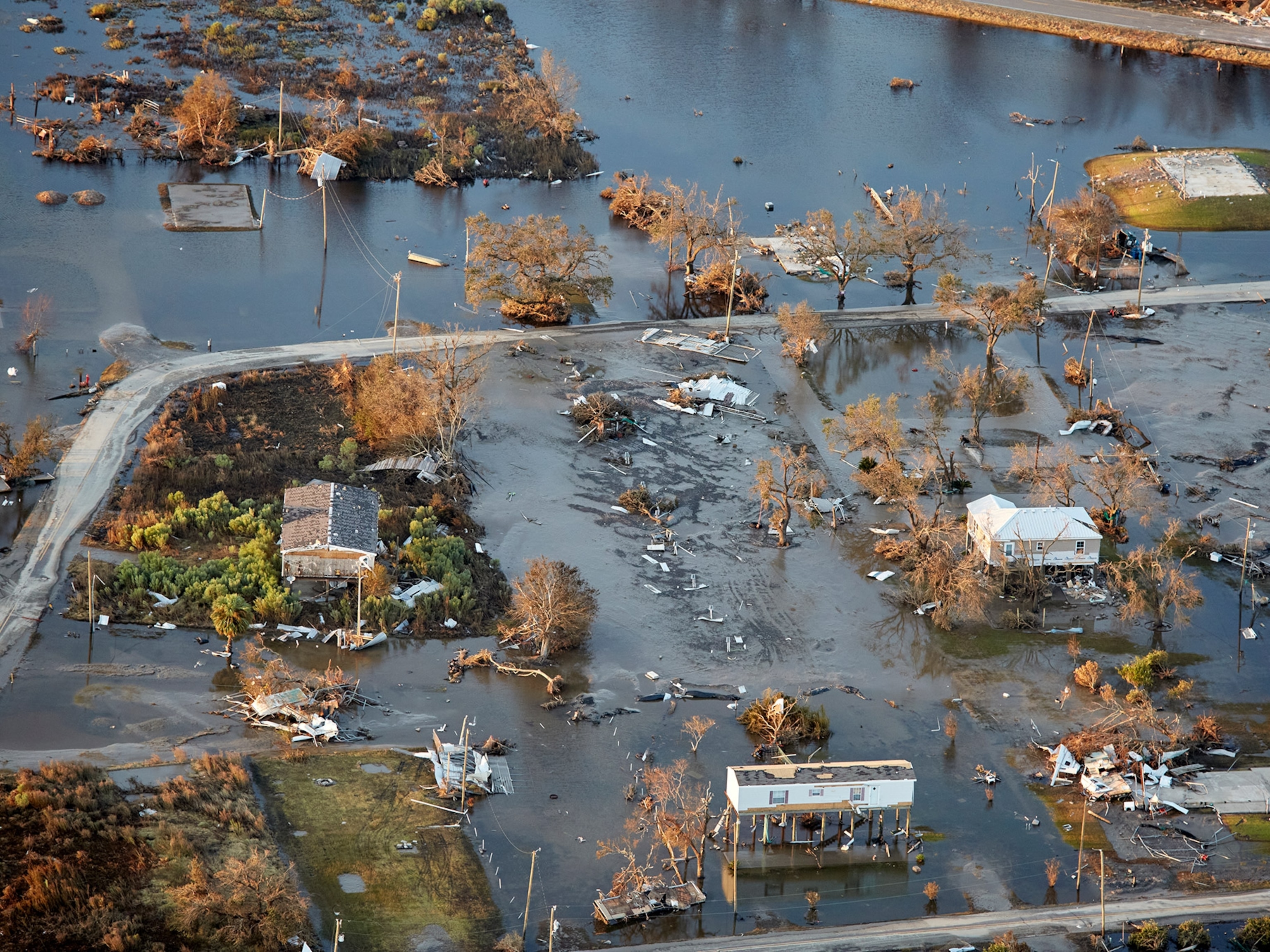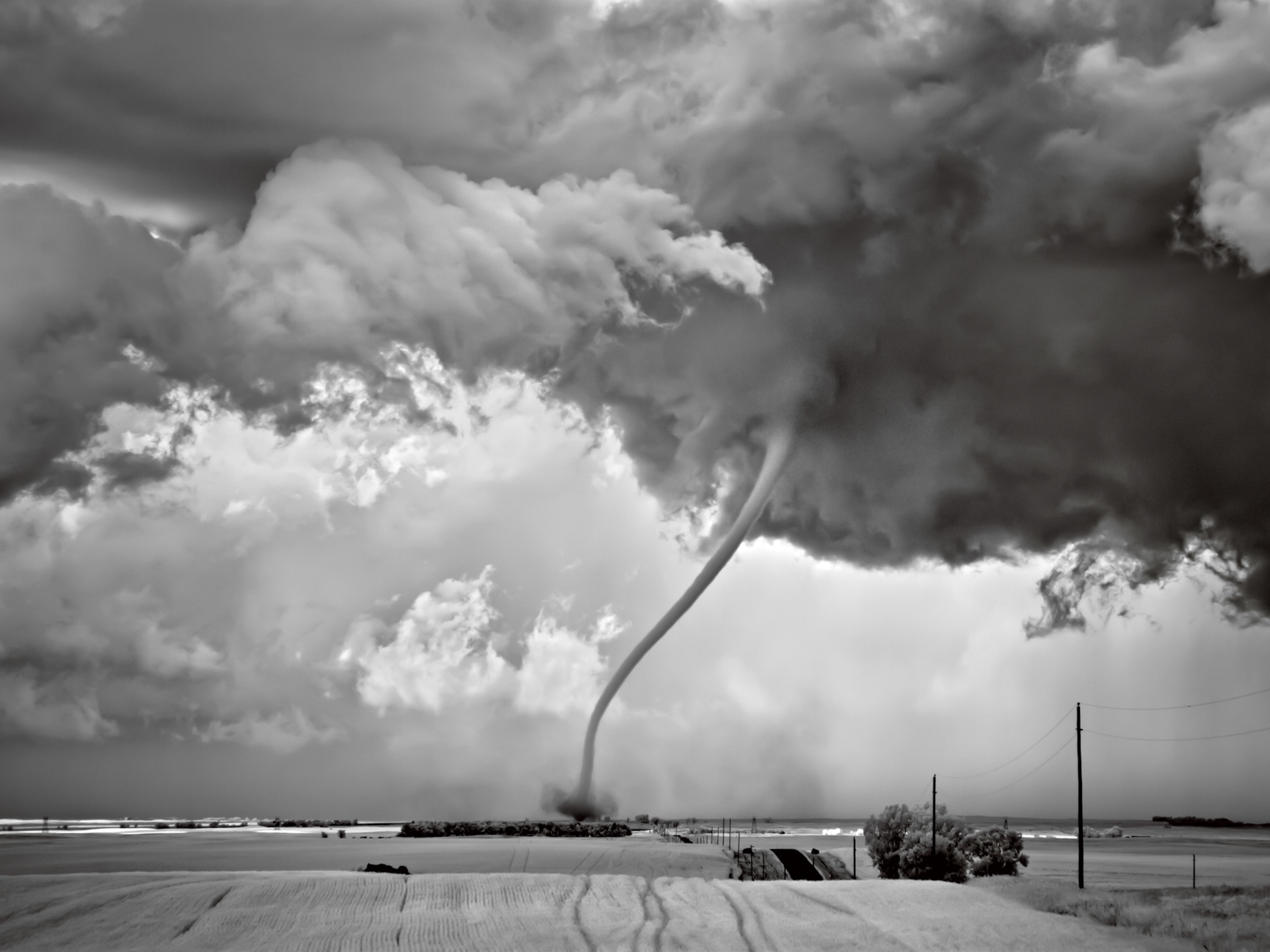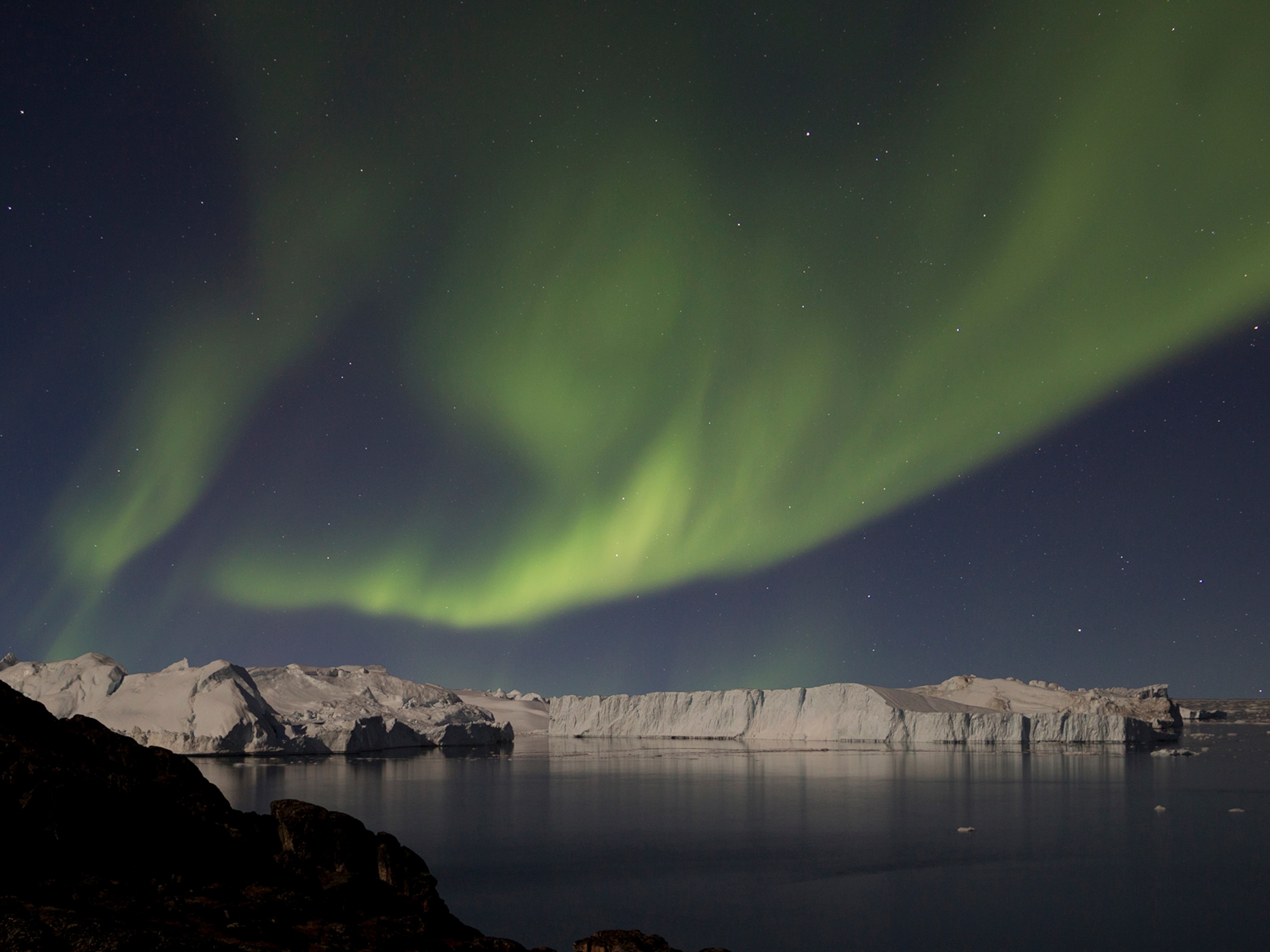
Watching Wind Turbines in Snow Sheds Light on Inefficiencies
New paper documents first commercial-scale look at "wakes" from turbines.
As wind energy production expands around the world, engineers have identified a nagging problem: When a wind turbine spins, its blades create disturbances in the air that can reduce the amount of energy produced.
This turbulence, or "wake," can cut a wind farm's power output by 10 to 20 percent. But assessing the particulars of the problem has been difficult. Computer simulations and wind tunnels have helped, but it's difficult to see the phenomenon on a large, commercial-scale turbine in the real world because minute changes in air patterns are invisible to the naked eye.
Now, researchers at the University of Minnesota have hit upon a novel solution: To see how a utility-scale wind turbine chops into the surrounding air, watch it in a snowstorm.
The scientists published their findings Tuesday in the journal Nature Communications, marking the first time that such air disturbances have been measured in detail on such a large scale.
Wind power is still a relatively small source of energy, accounting for just 2.5 percent of the world's electricity generation. But the numbers are growing quickly. Figures from the international trade group Global Wind Energy Council show that the world's wind power capacity has grown by more than 60 percent over the past five years and is expected to double between now and 2018. (See related blog post: "Wind Power's Share of the U.S. Power Grid Jumped Up in 2013, New Figures Show.")
Addressing the turbulence problem could help ease that growth for the industry, boosting efficiency and extending the life of each turbine. (See related story: "Will Newer Wind Turbines Mean Fewer Bird Deaths?")
Chilly Work
The new research was led by by University of Minnesota assistant professor Jiarong Hong, whose team spent time watching weather forecasts, waiting for a nighttime storm in which they could light up snowflakes around a turbine at the school's wind energy research station.
Hong, a mechanical engineer, was encouraged by more ordinary observation of snow early in his work: "When you look at the snowflakes around street lamps, that actually illustrate[s] vividly how snow motions can be captured and might be able to be used to track [air] flows."
Sometimes, his seven-person team drove out to the field station, set up all their equipment, and the snow didn't come.
Other times, they braved ten-hour stretches of working in subzero temperatures, only to be hampered by malfunctioning equipment and, at least once, a stranded vehicle. "It's really a heroic effort to get data like this," Hong said.
The experiment came together around 2 a.m. one snowy morning in February of last year, when Hong's researchers positioned a spotlight behind a 2.5 megawatt wind turbine. The spotlight was fitted to cast a thin sheet of light that illuminated the snow as the turbine sliced through it.
Hong and his team were finally able to gather data showing how air behaves behind a utility-scale turbine, giving new insights into how the turbulence works. For instance, they found that the air disturbances that other researchers had detected occur closer to the turbine blades than described in previous studies.
Making such measurements is critical for optimizing individual turbines and for maximizing efficiency when arrays of turbines are laid out. Hong said that the "unsteady flows" of air—miniature eddies that bounce off the turbine blades—can affect other turbines positioned downstream, reducing the amount of energy those turbines can tap.
The unstable air also wears more heavily on a turbine, reducing its lifespan. "If you understand these unsteady flows," Hong said, "[you can] mitigate such impact."
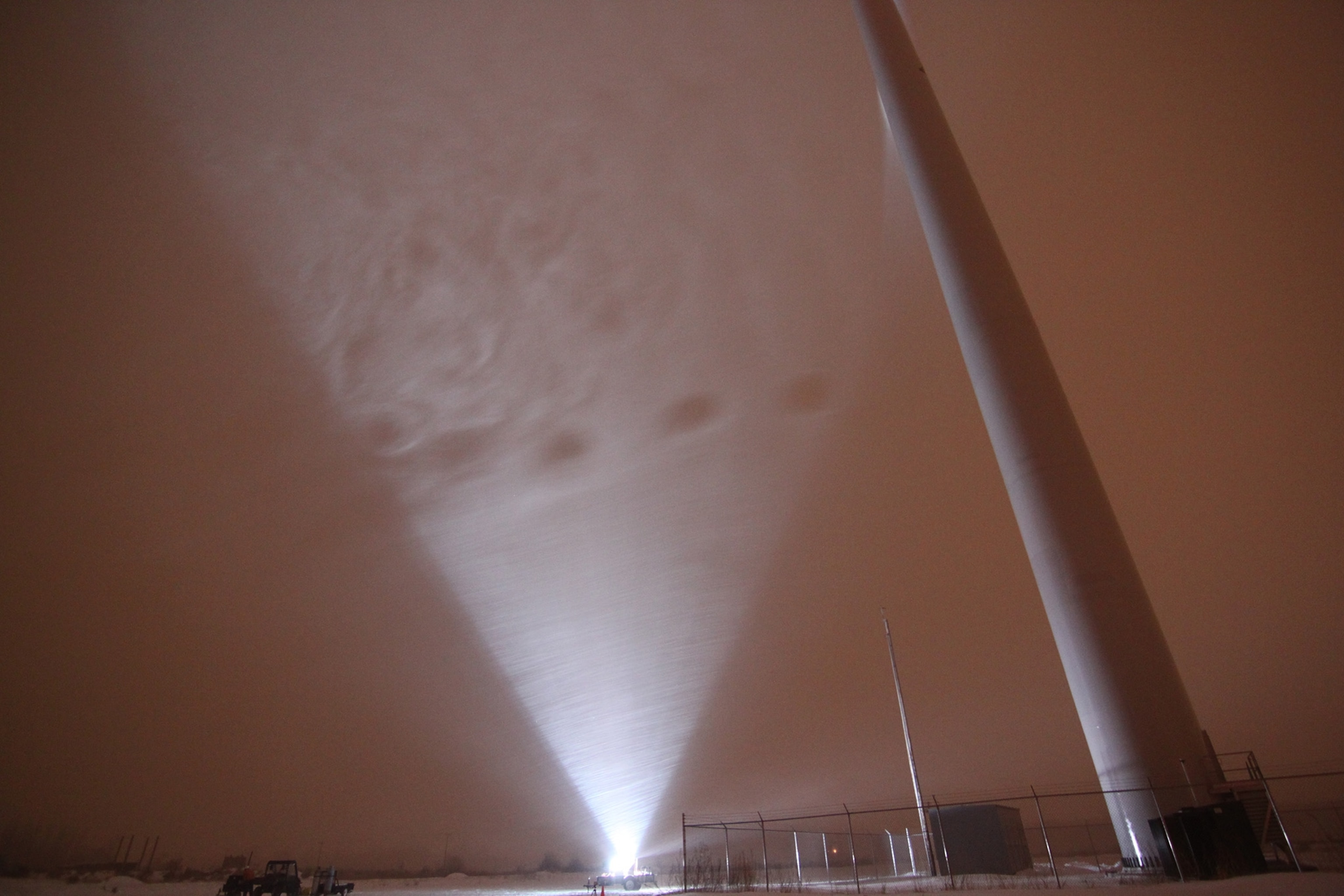
Real-World Results
Researchers had already been measuring wind turbine air flows by positioning model turbines in wind tunnels, then seeding the air with small "tracer" particles (olive oil droplets, for example, or aluminum oxide powders) and tracking their flow with pulsed lasers. The technique is called particle image velocimetry, or PIV.
But such experiments are on a far smaller scale than commercial reality. Most utility-scale turbines, which can surpass 300 feet (91 meters), aren't going to fit in a wind tunnel, and there is no good way to artificially distribute the necessary tracer particles in a larger setting.
Researchers are also using remote sensing techniques such as LIDAR (Light Detection and Ranging) to measure turbine blades' effect on the air, but "those techniques do not really produce the same level of data as you could have produced in the laboratory using particle image velocimetry," Hong said.
Robert Banta, who has studied wind turbine wakes using LIDAR in his work as a researcher at the National Oceanic and Atmospheric Administration's Earth System Research Laboratory, called the snowfall study "a very clever technique."
One of the study's limitations, he noted, was that by working under the very specific conditions of a snowstorm, "a lot of times the turbulence under those conditions isn't very strong." But, he said, "the fact that you can get some quantitative information in the atmosphere is really valuable."
Banta said that the range of his group's work with LIDAR covered turbine wakes over a range of 30 meters (98 feet) or more, whereas Hong's group took a more detailed look at the atmospheric eddies created at close range by wind turbines. "It's difficult for us to get in close to the turbine like they did," Banta said. "So the two techniques are very complimentary."
Hong said it's too early to say how his findings could be applied to wind farm design. His team will go back out into the snow again next winter, working to improve the accuracy and range of measurements. He hopes that his technique will help inform broader research, not just about wind farm design, but also about fundamental flow dynamics in the near-surface atmosphere. (Take the quiz: What You Don't Know About Wind Energy.")
"This is just the first step," Hong said.
This story is part of a special series that explores energy issues. For more, visit The Great Energy Challenge.

